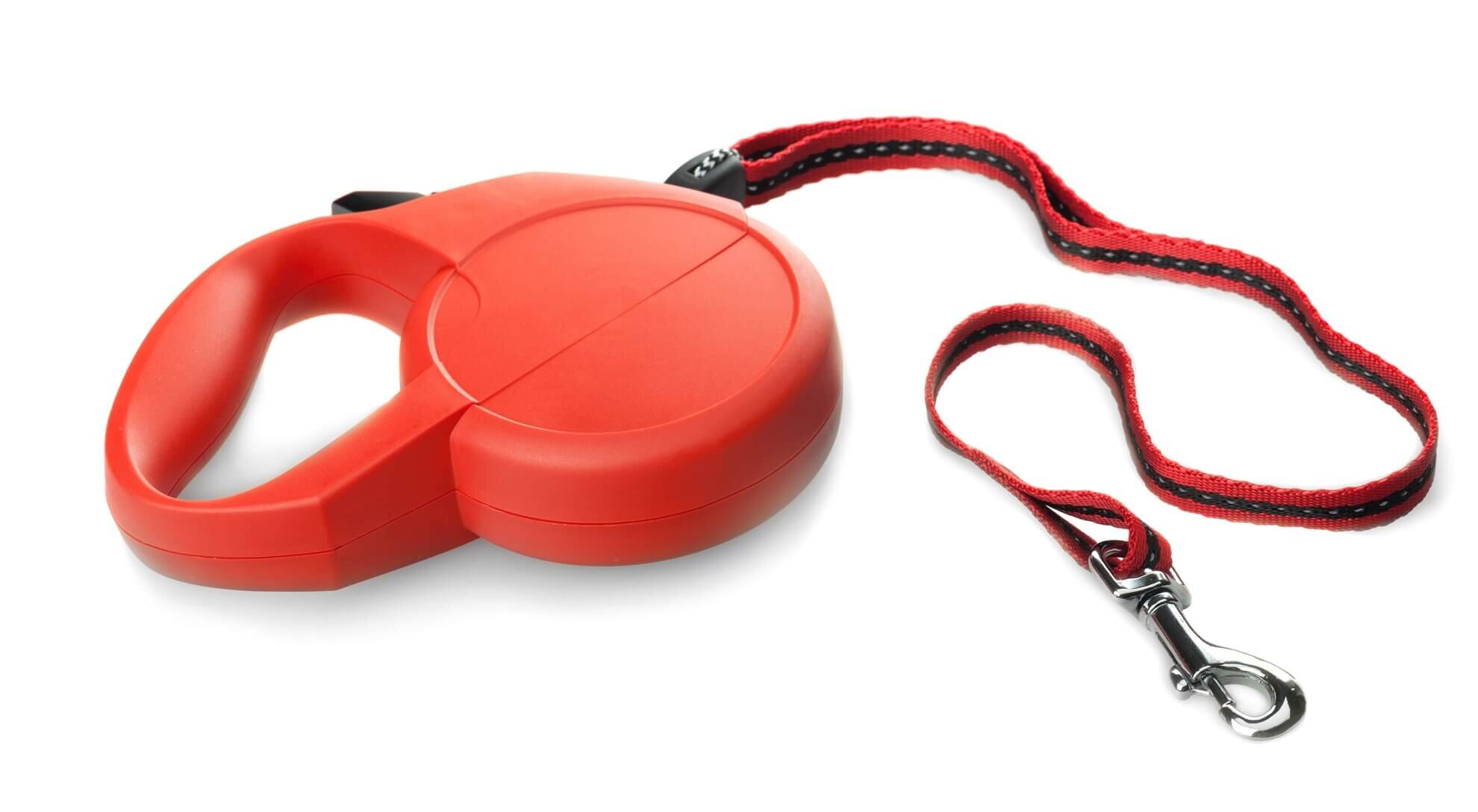Do you use a Retractable Lead – maybe this will make you think again?
Rectractable leads (also known as extendable leads). Personally, I don’t like them and would discourage use of them, read on to find out why.
Let me share one of the situations I’ve encountered that prompted me to write this post. I was driving my van down the road and up ahead, I could see a young lady walking her dog on the pavement. As I got closer, I could see her dog was on a lead but didn’t realise it was a retractable one. The lady was on her phone and wasn’t paying attention to her dog. As I drove past, the dog ran into the road RIGHT IN FRONT of my van and because the lady was preoccupied and didn’t have the ‘stop’ button engaged, her reaction to stopping him was non-existent. I had to swerve and do an emergency stop manoeuvre. I had two other vehicles behind me who also had to brake. Unbelievably, the dog was OK. I was OK, if not a little shaken up at the thought that I could have hit that poor little dog and thankfully, all the dogs in my van were safe too (they are all in individual comfortable crates)! The dog did nothing wrong, it was reacting on instinct (it may have seen a cat the other side of the road) but the lady was powerless to stop it running into the road because she was using a retractable lead. If your dog is not on a safe length lead when walking roadside, there is a high risk that you won’t be able to reign them in quick enough should they decide to leave the safety of the path at the wrong moment. This incident could have been much worse and it could also have been totally preventable.
However, there are other reasons why I wouldn’t recommend them too.
Retractable leads are popular because they allow dogs more freedom on walks as they aren’t as confining as normal leads. However, the purpose of using a lead when walking a dog is to keep the dog under control and safe. Retractable leads very often do the opposite.
Many retractable lead issues can be reduced if you are responsible and use them conscientiously, however, they are still more likely to cause accidents and injuries than the normal 6 foot flat leads. Why take those risks?
Here are a good few reasons why I think they should be avoided:
One
Using one of these leads means that your dog can get far enough away from you to get into trouble (some of these leads extend up to 26 feet). When your dog is that far away from you, it is not possible to protect him and a situation can quickly turn dangerous, just like the experience I had above or when they get into a situation where they have unwelcome contact from another dog. Once that lead is extended, you are powerless to help quickly and sometimes it can be too late before you are able to intervene.
Two
If you get caught up in the lead and the lead comes into contact with your skin as it is quickly pulled, you will get a nasty friction burn or cut. This has also resulted in amputation. These injuries occur most frequently on a hand but if the dog runs in circles, tangling you up, these injuries can occur on other parts of your body too. Many people have been pulled off their feet when using these leads and this can result in broken bones. Dogs can also get injured, generally on their legs, or their tails and similar injuries can result. The sudden jerk on the neck can result in neck wounds, lacerated tracheas and spinal injury - if you do use one of these leads, they must always be used with a harness rather than a collar. People have been bitten by their dogs when trying to untangle them from these leads. A gentleman stopped me the other day and asked if I had a pair of scissors on me. Strange I thought, but it was because he needed to cut his Bichon Frise loose as the hair on his ear had well and truly got tangled up in his retractable lead and it took both of us to free him.
Three
They can malfunction. They are made up of lots of parts which can become faulty or break. The cord can come loose from the handle, the locking mechanism can fail, the thin cord can break. If any of these happen (and they do), you would lose control of your dog or a broken part could cause injury to you or your dog.
Four
The handles are heavy and bulky and can easily be pulled out of your hand or dropped. This can result in a loose dog which is bad enough. However, if the handle is dropped, the noise of it dragging behind your dog can be very scary for him. Imagine, especially for a fearful dog, how this must feel when the scary, noisy object is retracting as he tries to escape it but can’t because it is gaining ground on him? This could result in a lingering fear of leads for your dog.
Five
They are a very bad idea from a training aspect as they actually train dogs to pull while on a lead because they learn that pulling extends the lead. To teach your dog not to pull on a lead, it is really important not to allow him to pull as being inconsistent will result in your dog trying to pull - because sometimes it works! It is much better to teach your dog to walk politely on a lead beside you without pulling.
Six
They can be a nuisance to other people as the length of a retractable lead enables your dog to run up to people before you have enough time to control it. It could have run and jumped on someone, scared a child or someone who is wary of dogs. It could have caused another dog to feel threatened, as some dogs adopt a posture when pulling which can look like aggression to another dog who may then decide to fight back.
Seven
They do not assist in recall training. When using one of these leads, it doesn’t matter if your dog is by your side or 10 metres away from you, they will always feel tension on the lead and therefore, never really feel the ‘freedom’ we want them to feel for an effective recall. The handler is never truly able to see when the lead will come to a stop so the lead itself is what stops your dog from going further meaning that the dog can learn to keep going until they are physically incapable, which doesn’t assist the overall aim of off lead recall training at all. The use of a long training line is far more safer and effective for recall training.
In my opinion, these leads are dangerous. They cause accidents and injuries; if dropped they can be scary; they can malfunction; they are not a substitute to preventing your dog from pulling (they actually have the opposite effect) and they aren’t effective in recall training. In summary, when walking your dog on a pavement, please use a normal length lead and ensure you have complete control over your dog. If you are training recall, use a long training line instead as these are much better, safer and more effective when it comes to training a recall.

